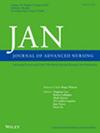利用机器学习预测护士离职意向并揭示关键预测因素:一项跨国调查
IF 3.4
3区 医学
Q1 NURSING
引用次数: 0
摘要
目的利用机器学习技术预测护士的离职意向,并确定三个国家中最具影响力的社会心理、组织和人口预测因素。设计横断面、多国调查设计。方法对2023年6 - 9月在美国、新西兰和马耳他的1625名护士进行在线调查。20个变量被评估,包括工作满意度、心理安全、抑郁、出勤、个人-群体契合度和工作投入。使用无监督机器学习(k均值聚类)将离职意向转换为二元变量。采用了逻辑回归、随机森林、XGBoost、决策树、支持向量机和人工神经网络等6种监督算法。采用准确率、精密度、召回率、F1评分和曲线下面积(Area Under Curve, AUC)评价模型的性能。使用逻辑回归(系数)、XGBoost(增益)和随机森林(平均降低精度)检验特征重要性。结果logistic回归的预测效果最好(准确率为0.829,f1 = 0.851, AUC = 0.890),其次是支持向量机(多项式核)(准确率为0.805,f1 = 0.830, AUC = 0.864)和随机森林(准确率为0.791,f1 = 0.820, AUC = 0.859)。在特征重要性分析中,工作满意度始终是所有模型中最具影响力的预测因子。在逻辑回归模型中确定的其他关键预测因素包括国家(美国)、工作经验(6-10年)、抑郁和心理安全。XGBoost和random forest还强调了工作投入、群体层面真实性和个人群体契合度的作用。工作压力相关的出勤在XGBoost中具有独特的显著性,而抑郁在逻辑回归和随机森林模型中都是最重要的预测因子。结论利用多维预测因子,机器学习可以有效预测离职意向。该方法可以支持数据驱动的临床保留策略决策。影响本研究提供了一个数据驱动的框架来确定护士的离职风险。通过将机器学习集成到劳动力规划中,医疗保健领导者可以制定有针对性的、基于证据的战略,以提高员工留存率并提高组织稳定性。报告方法:本研究遵循STROBE报告准则。患者和公众的贡献本研究的设计、实施和报告中没有患者或公众的参与。本文章由计算机程序翻译,如有差异,请以英文原文为准。
Harnessing Machine Learning to Predict Nurse Turnover Intention and Uncover Key Predictors: A Multinational Investigation
AimsTo predict nurses' turnover intention using machine learning techniques and identify the most influential psychosocial, organisational and demographic predictors across three countries.DesignA cross‐sectional, multinational survey design.MethodsData were collected from 1625 nurses in the United States, Türkiye and Malta between June and September 2023 via an online survey. Twenty variables were assessed, including job satisfaction, psychological safety, depression, presenteeism, person‐group fit and work engagement. Turnover intention was transformed into a binary variable using unsupervised machine learning (k‐means clustering). Six supervised algorithms—logistic regression, random forest, XGBoost, decision tree, support vector machine and artificial neural networks—were employed. Model performance was evaluated using accuracy, precision, recall, F1 score and Area Under the Curve (AUC). Feature importance was examined using logistic regression (coefficients), XGBoost (gain) and random forest (mean decrease accuracy).ResultsLogistic regression achieved the best predictive performance (accuracy = 0.829, f1 = 0.851, AUC = 0.890) followed closely by support vector machine (polynomial kernel) (accuracy = 0.805, f1 0.830, AUC = 0.864) and random forest (accuracy = 0.791, f1 = 0.820, AUC = 0.859). In the feature importance analysis, job satisfaction consistently emerged as the most influential predictor across all models. Other key predictors identified in the logistic regression model included country (USA), work experience (6–10 years), depression and psychological safety. XGBoost and random forest additionally emphasised the roles of work engagement, group‐level authenticity and person–group fit. Job‐stress‐related presenteeism was uniquely significant in XGBoost, while depression ranked among the top predictors in both logistic regression and random forest models.ConclusionMachine learning can effectively predict turnover intention using multidimensional predictors. This methodology can support data‐driven decision‐making in clinical retention strategies.ImpactThis study provides a data‐driven framework to identify nurses at risk of turnover. By integrating machine learning into workforce planning, healthcare leaders can develop targeted, evidence‐based strategies to enhance retention and improve organisational stability.Reporting MethodThis study adhered to STROBE reporting guideline.Patient and Public ContributionThis study did not include patient or public involvement in its design, conduct or reporting.
求助全文
通过发布文献求助,成功后即可免费获取论文全文。
去求助
来源期刊
CiteScore
6.40
自引率
7.90%
发文量
369
审稿时长
3 months
期刊介绍:
The Journal of Advanced Nursing (JAN) contributes to the advancement of evidence-based nursing, midwifery and healthcare by disseminating high quality research and scholarship of contemporary relevance and with potential to advance knowledge for practice, education, management or policy.
All JAN papers are required to have a sound scientific, evidential, theoretical or philosophical base and to be critical, questioning and scholarly in approach. As an international journal, JAN promotes diversity of research and scholarship in terms of culture, paradigm and healthcare context. For JAN’s worldwide readership, authors are expected to make clear the wider international relevance of their work and to demonstrate sensitivity to cultural considerations and differences.

 求助内容:
求助内容: 应助结果提醒方式:
应助结果提醒方式:


